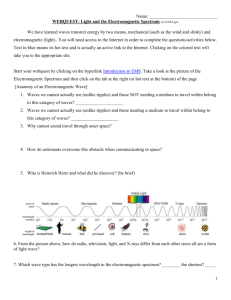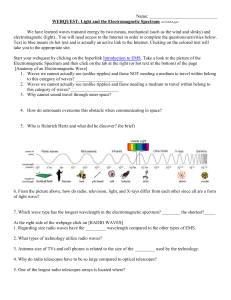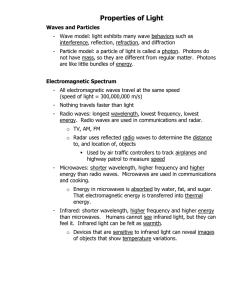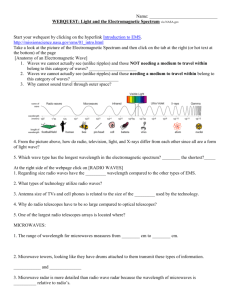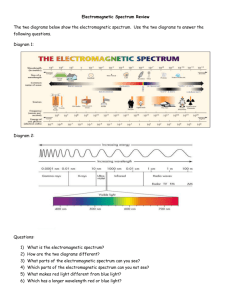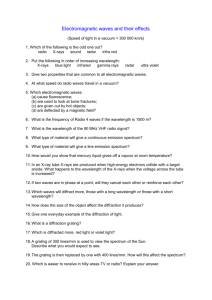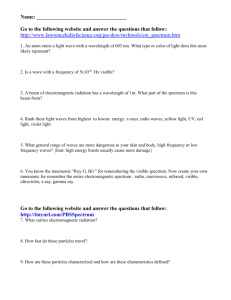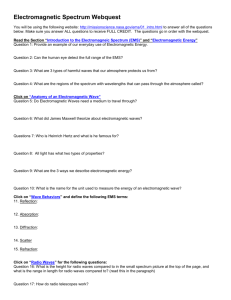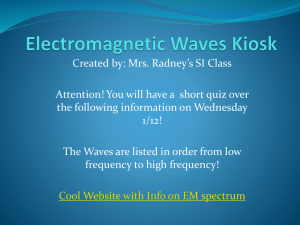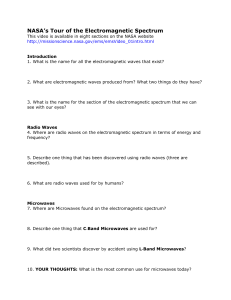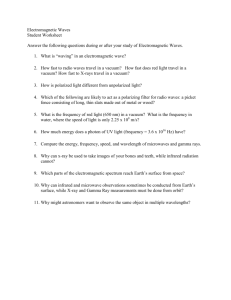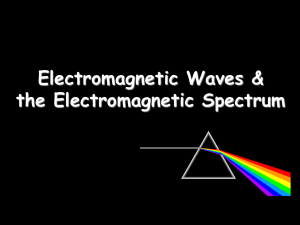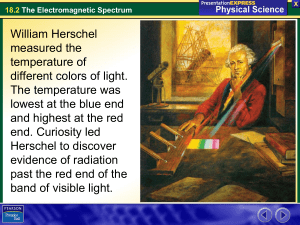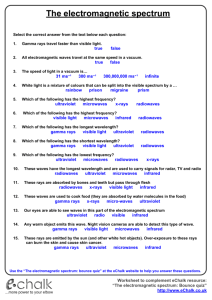WEBQUEST: Light and the Electromagnetic Spectrum
advertisement
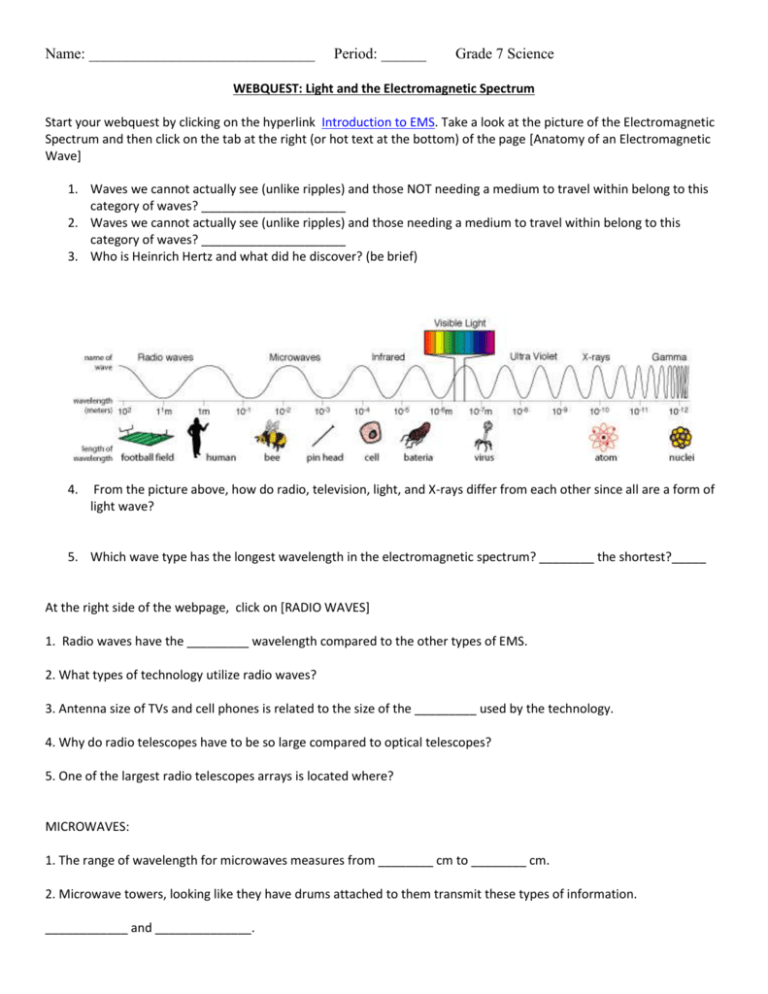
Name: ______________________________ Period: ______ Grade 7 Science WEBQUEST: Light and the Electromagnetic Spectrum Start your webquest by clicking on the hyperlink Introduction to EMS. Take a look at the picture of the Electromagnetic Spectrum and then click on the tab at the right (or hot text at the bottom) of the page [Anatomy of an Electromagnetic Wave] 1. Waves we cannot actually see (unlike ripples) and those NOT needing a medium to travel within belong to this category of waves? _____________________ 2. Waves we cannot actually see (unlike ripples) and those needing a medium to travel within belong to this category of waves? _____________________ 3. Who is Heinrich Hertz and what did he discover? (be brief) 4. From the picture above, how do radio, television, light, and X-rays differ from each other since all are a form of light wave? 5. Which wave type has the longest wavelength in the electromagnetic spectrum? ________ the shortest?_____ At the right side of the webpage, click on [RADIO WAVES] 1. Radio waves have the _________ wavelength compared to the other types of EMS. 2. What types of technology utilize radio waves? 3. Antenna size of TVs and cell phones is related to the size of the _________ used by the technology. 4. Why do radio telescopes have to be so large compared to optical telescopes? 5. One of the largest radio telescopes arrays is located where? MICROWAVES: 1. The range of wavelength for microwaves measures from ________ cm to ________ cm. 2. Microwave towers, looking like they have drums attached to them transmit these types of information. ____________ and ______________. 3. Microwave radar is more detailed than radio wave radar because the wavelength of microwaves is __________ relative to radio’s. 4. What is the “cosmic microwave background”? What significance is this discovery? INFRARED: 1. What does “thermal waves” mean? 2. Short infrared wavelengths are used in what technology? 3. Can humans actually see (without any aid) infrared radiation? _______ VISIBLE LIGHT: 1. What gives rise to a rainbow...how is it created? 2. What determines the color of an object? 3. What type of structure within our eye detects color? ULTRAVIOLET: 1. What category of animal sees in the UV spectrum instead of the visible light humans can see? 2. UV rays cause this to the human skin if too many are absorbed? 3. What gas is chiefly responsible for blocking most of the UV radiation of the Sun? 4. Many scientists like to study cosmic objects in the UV spectrum because objects giving off large amounts of UV light are typically very _________ and _________. X-RAYS 1. Who first discovered X-rays? 2. The first X-rays were photographs of these body parts: 3. Why do bones show up on an X-ray photograph and not skin? 4. NASA's Mars Exploration Rover, Spirit uses X-rays to do what? GAMMA RAYS: 1. Why are gamma rays not able to reflect off a mirror’s surface? 2. What are two ways in which gamma rays are produced? 3. Relatively, how much energy is a gamma ray burst compared to the Sun’s energy output? Primary Colors of Light and Pigments http://www.teachersdomain.org/asset/lsps07_int_lightpigment/ 1. What is a photon? Are all photons alike? 2. When white light goes into a blue filter, blue light comes out. How did the blue get into the light? 3. When red light passes through a green filter, no light gets through. What happens to it? When red light is projected onto a white surface, red light is reflected. Blue light will similarly be reflected as blue. When both are projected onto a white surface, we see neither red nor blue. Is the red light still there? Is the blue light still there? What happened? 4. Explain why a sweater looks red. Start with sunlight or white light from a lamp striking the sweater. Tour of the Electromagnetic Spectrum http://www.pbs.org/wgbh/nova/gamma/spectrum.html Take the Self-Guided Tour and answer the following questions: What are electromagnetic waves? Name one manufactured device or natural phenomenon that emits electromagnetic radiation in each of the following wavelengths: radio, microwave, infrared, visible light, ultraviolet, X-ray, and gamma ray. Which type(s) of electromagnetic radiation do human bodies emit?
